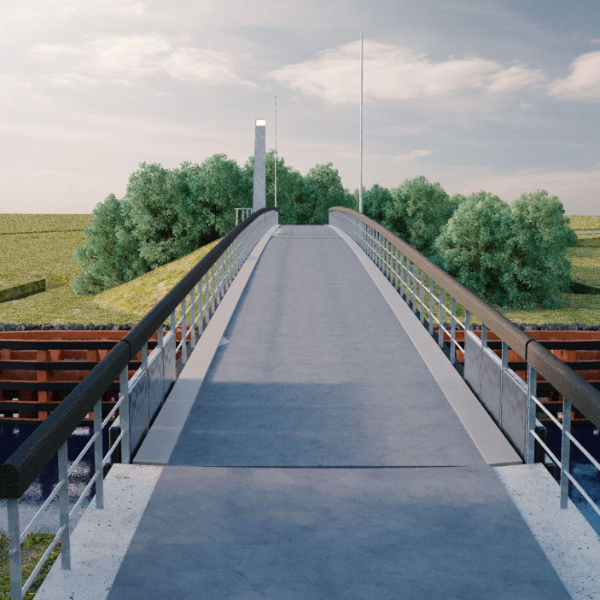Bio-based composite bridge in Ritsumasyl

Bio-based composite bridge in Ritsumasyl
The Province of Friesland adopted an innovative approach when replacing a bridge over the Van Harinxma canal in Ritsumasyl. In early April, a special construction team began the challenging task of dismantling the existing steel structure and replacing it with one made entirely of bio-based composite.
Contractors Reef and Jansen Venneboer, composite manufacturer Infra Composites and the provincial authority conducted a year-long study to determine the feasibility of a bio-based cycle bridge at Ritsumasyl. Witteveen+Bos formed part of the construction team as consultants to the Province of Friesland. The bridge project is part of a larger infrastructural programme, the preparatory phase of which began in 2010 under the guidance of Sweco and Witteveen+Bos. The project calls on our specialist expertise in the field of bio-composites.
A daring concept
Never before has anyone attempted to construct a movable bridge with a span of 17 metre using only bio-composite. The material is innovative and still under development. The construction team first had to determine whether it would be possible to manufacture at least the movable part of the bridge in bio-composite. Only then could the construction process begin.
Resin and fibres
Bio-based composite is a new building material which consists of natural resin reinforced by fibres. In the past, a mix of 80% bio-fibres and 20% glass fibre has been used. There is no bridge anywhere in the world made of 100% bio-based composite. The construction team hopes to become the first to complete a bridge entirely of natural, recycled material. During the study phase, researchers tried to ascertain how a material with the required strength and life cycle could be produced. The design of the bridge was produced in parallel, and was therefore not affected by the choice of material.
Planning
In late 2017, the construction team submitted its report confirming that it would indeed be possible to build a bio-based bridge. The project was then approved by the provincial authority whereupon construction can begin in 2018.
More information?



